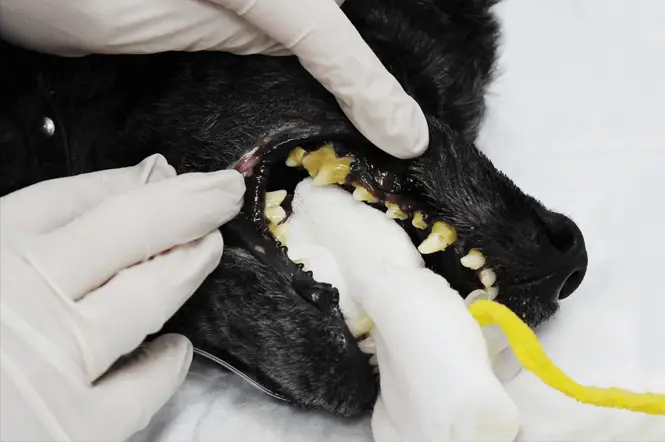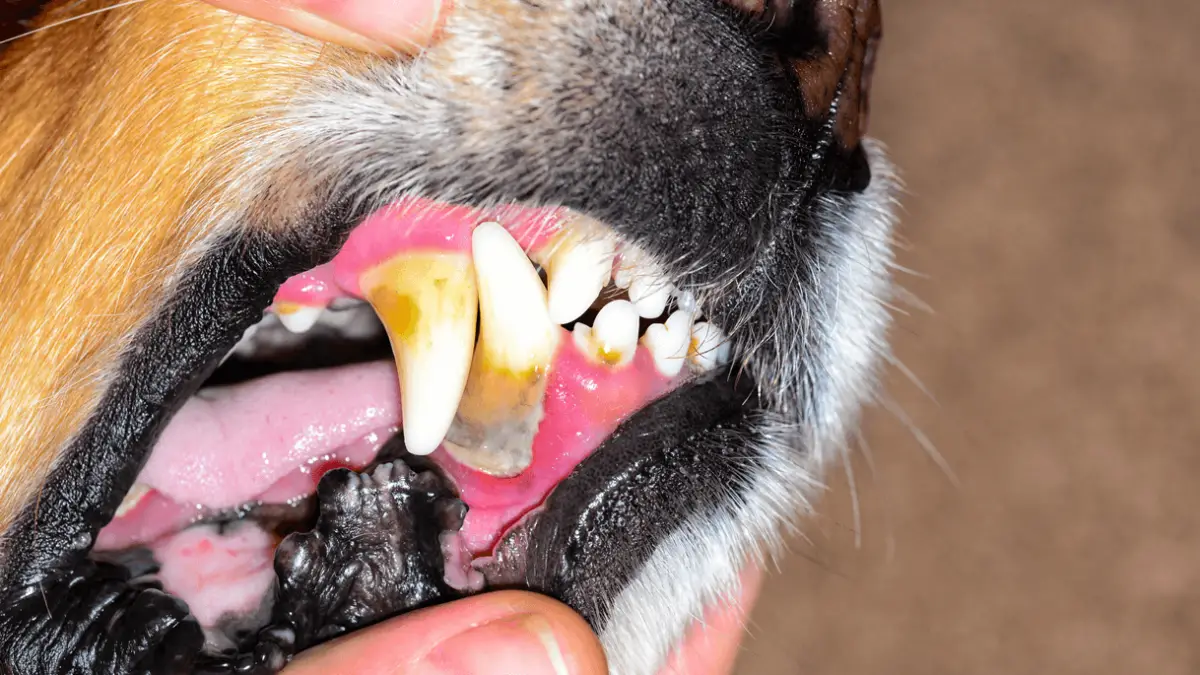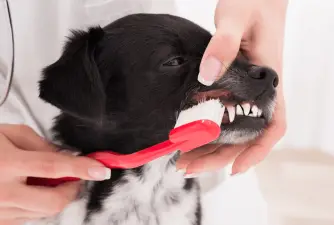Periodontal Disease in Dogs | Causes & Treatment
21.11.2021.
Dental hygiene is important. That is as true for humans as it is for dogs. However, dogs have some advantage over us in that department. Tartar buildup develops a lot slower for them than for us. Nevertheless, this aspect of your dog’s overall grooming is necessary and crucial. The bad news is that many dog owners fail to provide proper dental care to their dogs. If that happens, one of the things that can happen is periodontal disease. If your dog’s breath smells bad, and you’re worried about their oral health, here’s what you should know about periodontal disease in dogs.
What is periodontal disease in dogs?
Periodontal disease in dogs is a disease of the gums, bones, and other supporting teeth structures. It is often described as a “silent” disease because it progresses slowly. Most dog owners aren’t aware their dogs have periodontal disease or gum issues until the disease has already progressed. However, periodontal disease in dogs can cause chronic pain. If the owners allow the disease to evolve, it can lead to severe infections, loss of bone and teeth, and in worst cases - death. It is divided into four stages.
What are the stages?
Periodontal disease is divided into four stages. The main difference between those stages is the disease’s progression. The higher the stage, the more damaged and impacted the dog’s teeth, gums, and bones. Here are the four stages of periodontal disease in dogs;
Stage 1 - This stage is when dogs get gingivitis. The gums are inflamed, and the dog has bad breath, but the teeth and bone are not yet severely affected.
Stage 2 - At this stage, about 25% of the teeth supporting structures are lost. The dog will have puffy, inflamed gums, bad breath, and mild bleeding. Gums may or may not be receded.
Stage 3 - In Stage 3, up to 50% of supporting teeth structures are lost. X-rays will show bone loss, the vet will find abnormally large periodontal pockets, and the dog’s teeth will be loose.
Stage 4 - This is a very advanced periodontal disease stage. More than 50% of supporting structures are lost. The gums have receded, rotting teeth are exposed, dogs will have missing teeth, and pus oozing from exposed wounds.

What causes periodontal disease in dogs?
The primary cause of the periodontal disease is poor oral hygiene. There are things that can factor in the disease’s development, like poor nutrition. However, the main reason is poor oral hygiene. If the owners allow the bacteria to build up, the bacteria will form plaque. The plaque will mix with minerals from food and water to form tartar, which is harder to brush away. These large numbers of bacteria will cause a dog’s immune system to react. The natural reactions are inflammation, pain, and bleeding, which directly result from tartar buildup. If the owner still doesn’t react and clean the dog’s teeth, periodontal disease will develop.
How can I know if my dog has periodontal disease?
Even if you’re not a vet, signs of periodontal disease are pretty hard to miss. You might not know the exact name of the oral issues your dog is having, but it will be pretty hard to miss. One of the first signs will be bad breath and inflamed gums. When that happens, most dog owners contact their vets and schedule an examination. It is a pretty good idea to learn other periodontal disease symptoms, so you can react even faster and help your dog get better.
Symptoms of periodontal disease in dogs
The easiest way to notice your dog is developing periodontal disease is by noticing symptoms. Such a painful and exposed condition will cause symptoms that are pretty hard to miss. Here are the most common symptoms of periodontal disease in dogs;
- Inflamed gums
- Bleeding gums
- Irritability
- Weight loss
- Bad breath
- Loose teeth
- Bloody or “ropey” saliva
- Loss of appetite
- Drooling
- Blood in the dog’s water bowl
- Chewing on one side
VET TIP: Another possible sign of periodontal disease is isolation. Dogs will be in quite a bit of pain by the time apparent symptoms of the periodontal disease appear. If that happens, they will not want to show weakness, which means they will isolate. If you notice your dog is isolating more than before, check their teeth and see if they’re in pain.
How dangerous is periodontal disease?
Periodontal disease in dogs is very dangerous. Dogs should have great oral hygiene because bad teeth can kill them. Bacteria in their mouth can quickly enter their bloodstream. That means the heart, brain, lungs, stomach, kidneys, and liver are all at risk of developing bacterial infections. If that happens, the dog’s life is in danger. You should make sure you keep your dog’s pearly whites clean and healthy. If you’re not sure how to do that, check out this article - How to keep your dog’s teeth clean?
How is it diagnosed?
The first thing your vet will do is check the dog’s teeth. They will perform a short test and decide if they need to proceed or something else is causing similar symptoms. When the vet notices the dog has gum problems, they will check the teeth for abnormal space between gums and teeth. That is called periodontal probing. After that, the vet will order x-rays to see how severe the disease is.
How is it treated?
The exact treatment will be determined by the precise stage of the disease. As you can imagine, a slight inflammation is treated differently than rotting teeth. However, treatment is possible. Based on the stages of the disease, treatment will look like this;
Stage 1 treatment - Brushing or cleaning and removing the tartar.
Stage 2 treatment - This stage will require professional cleaning. The vet might have to apply antibiotics or an antibiotic gel in the periodontal pockets.
Stage 3 treatment - If the dog’s teeth are in Stage 3, the vet will need to perform advanced restorative procedures and antibiotics. They will also tell you how to properly take care of the dog’s teeth at home. If the infected teeth cannot be saved, the vet will extract them.
Stage 4 treatment - The only way to save a dog in Stage 4 is extraction. The vet will remove the affected teeth and probably prescribe antibiotics to treat inflammation.
Can periodontal disease in dogs be prevented?
Yes. You can easily prevent periodontal disease in dogs by ensuring your dog has good oral hygiene. You can brush your dog’s teeth or give them products that will do that for you. You can get dental chews that will remove plaque and make sure your dog’s teeth are clean and healthy.
World Dog Finder team







Share